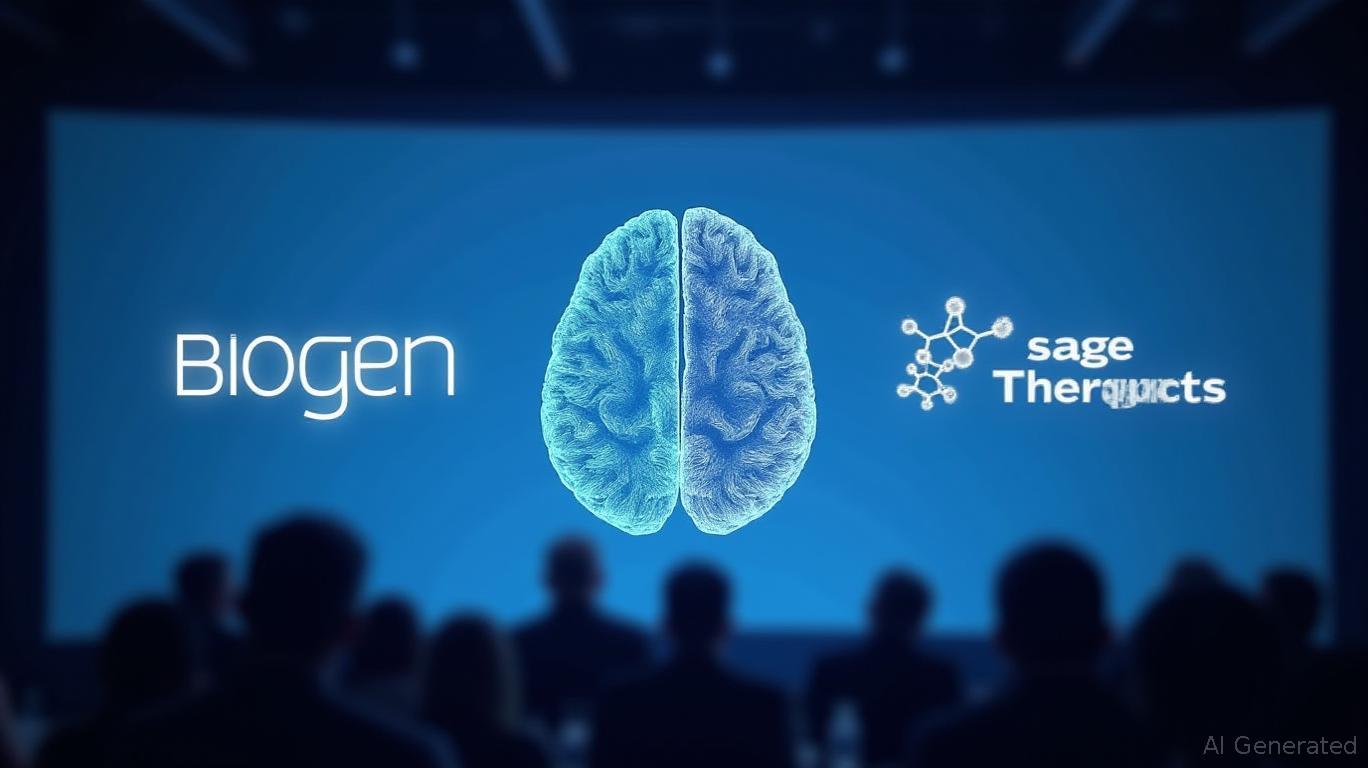Biogen's Sage Move: A Neuroscience Gamble with High Stakes
In the ever-shifting landscape of biopharma, few moves are as bold—or as fraught—as a $500 million-plus acquisition of a smaller rival.
(NASDAQ: BIIB) stands at this precipice, eyeing Sage Therapeutics (NASDAQ: SAGE) as a potential acquisition target. The catalyst? A race to fortify its neuroscience portfolio amid declining multiple sclerosis (MS) sales and the rising star of Sage's postpartum depression drug, ZURZUVAE. The question isn't just whether Biogen can pull off the deal, but whether it should—and at what cost.
The Catalyst: Shoring Up Neuroscience in a Declining MS Market
Biogen's core MS franchise, once a cash cow, now faces a 11% year-over-year revenue decline due to biosimilar competition. To offset this, the company has leaned on newer therapies like LEQEMBI (Alzheimer's) and SKYCLARYS (MS), which contributed 45% of Q1 2025 product revenue. But the pipeline gap remains glaring. Enter Sage's ZURZUVAE, which generated $13.8 million in Q1 2025 collaboration revenue (up 21% from Q4 2024). For Biogen, acquiring Sage would lock in exclusivity to a drug with 3,000+ prescriptions in Q1 alone, while accelerating its push into women's mental health—a market projected to grow at 8% annually.
The existing partnership is a critical entry point. Biogen already co-promotes ZURZUVAE with Sage, and the $22.4 million breakup fee Supernus agreed to in its acquisition of Sage is a negligible hurdle for a company with $2.6 billion in cash. “Biogen could outbid Supernus without blinking, and the due diligence is already done,” says one Wall Street analyst. “This is a no-brainer if they want to own ZURZUVAE's growth.”
Valuation: A Discounted Asset, but Risks Linger
Sage's valuation presents a tantalizing opportunity. The Supernus deal priced Sage at $8.50 per share upfront, but its stock closed at $9.28 on June 18, 2025, suggesting investors anticipate a better bid. Biogen could likely pay $10–$12 per share—a 24%–40% premium—and still keep the deal affordable. GuruFocus values Biogen's shares at $211 by mid-2026, implying 63% upside from its June 6 closing price of $133.13. A Sage acquisition could justify that optimism if it stabilizes Biogen's top-line growth.
But Sage isn't without scars. Its net loss hit $62.2 million in Q1, and its cash reserves of $424 million will only last until mid-2027. “Sage's survival hinges on ZURZUVAE's uptake,” notes a life sciences strategist. “If Biogen walks away, Sage's options narrow to a fire-sale or a prolonged cash burn.”
Risks: Regulatory Headwinds and a Fragile Balance Sheet
The calculus isn't all sunny. Biogen's own challenges loom large. Its 2025 revenue is expected to decline by a mid-single-digit percentage, and Medicare tariff uncertainties could squeeze margins further. Meanwhile, Sage's reliance on a single drug—while promising—exposes it to regulatory scrutiny. The FDA's stance on ZURZUVAE's long-term safety could either accelerate its adoption or stall it entirely.
The bigger wildcard is Supernus' reaction. While its breakup fee is small, the company could prolong litigation, sapping Biogen's resources. “This isn't a walk in the park,” warns one M&A lawyer. “Supernus might fight to protect its $561 million investment, even if it means a prolonged battle.”
Investment Thesis: Biogen to Buy? SAGE a Speculative Bet
For investors, the path forward is clear but fraught with timing risks. If Biogen moves swiftly, BIIB could rise to GuruFocus' $211 target, as the Sage deal would validate its pivot to newer therapies. Until then, overweight BIIB if you believe the acquisition is imminent—especially given its $2.6 billion cash war chest and the minimal regulatory hurdles in a neuroscience-focused deal.
SAGE, meanwhile, is a high-risk, high-reward play. Its stock could surge if Biogen bids, but if it remains with Supernus or falters without a buyer, the $9.28 price could retreat toward its 2024 lows. “This is a call option on Biogen's desperation,” says one trader. “Buy SAGE only if you're betting on a bid—and keep positions small.”
Final Take
Biogen's pursuit of Sage is a calculated gamble, but one that aligns with its strategic imperatives. The neuroscience space is crowded, but ZURZUVAE's niche gives Biogen a toehold in an underserved market. For investors, the question isn't whether Biogen can afford the deal—it's whether they can afford not to do it. The data says yes—but the execution will determine if this becomes a win-win or a cautionary tale.
Recommendation:
- Overweight BIIB if a bid emerges, targeting $180–$200 in 2026.
- Hold SAGE as a speculative position; a bid could trigger a 20%–30% spike, but risks of failure are material.
The race to own the future of neuroscience isn't just about drugs—it's about who can pivot fastest. Biogen's move on Sage could be the first step in rewriting its narrative.
Data as of June 6, 2025. Past performance does not guarantee future results.

Comments
No comments yet